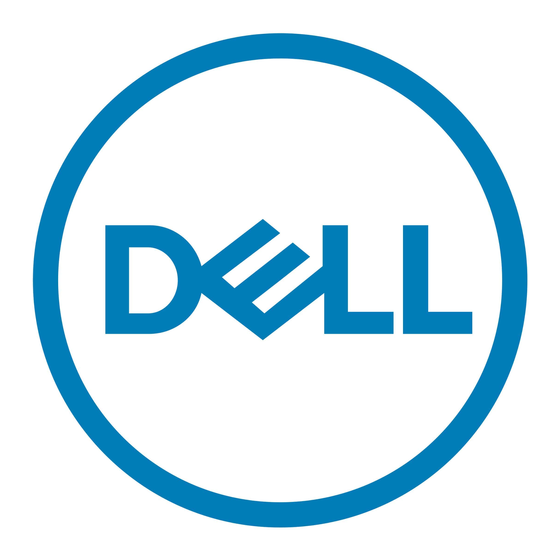Dell DX6000G Handbuch zur Einrichtung und Konfiguration - Seite 13
Blättern Sie online oder laden Sie pdf Handbuch zur Einrichtung und Konfiguration für Server Dell DX6000G herunter. Dell DX6000G 23 Seiten. Rack installation instructions — static rails
Auch für Dell DX6000G: Benutzerhandbuch (48 seiten), Anmerkungen zur Veröffentlichung (7 seiten), Rack-Einbau (2 seiten), Rack-Einbau (2 seiten)

2.4.3. Upgrading from Version 2.5
Version 2.5 Red Hat installations can upgrade to 2.6 by stopping all services, installing the new
version and then restarting services. After copying the 2.6 distribution file to the server and
unzipping it, run the following commands as root:
Note
Any configuration file backups previously taken for disaster recovery purposes must be
discarded and a new backup taken, as previous configuration files are not compatible
with the new software version.
1.
Stop all client activity on the server. Stopping remote Samba or NFS access to the share is an
easy way to do this.
2.
Monitor the local spooler cache draining to zero by using the following script:
./cfs-checkspool
The script will monitor the spool cache and any active writes for all configured shares in a loop
and print a statement when all activity has completed and it is safe to shutdown CFS.
3.
Stop CFS: /etc/init.d/caringo-cfs stop
4.
Stop CNS: /etc/init.d/caringo-cns stop
5.
Install the new software: ./installCFS.sh
6.
Start CNS: /etc/init.d/caringo-cns start
7.
Start CFS: /etc/init.d/caringo-cfs start
2.5. Removing CFS and CNS
The following commands should be run to remove CNS and CFS if the data and metadata are no
longer needed:
1.
Prior to removing CFS, the timescape horizon for all shares should be set to 0 days and then
all files and folders should be manually deleted from all mountpoints to ensure content is not
orphaned in DX Storage. This will trigger the namespace garbage collection process to delete
the associated content from DX Storage. When the CNS log at debug level consistently shows
that no files have been deleted as part of the garbage collection process, it is safe to proceed
with removal of the software.
2.
Stop CFS: /etc/init.d/caringo-cfs stop
3.
Stop CNS: /etc/init.d/caringo-cns stop
4.
To remove all mounts, do the following for each mount: cfs-admin mkfs --delete --
cfs-id=testMount1 (where 'testMount1' equals the name of the mountpoint to be deleted)
5.
Purge CFS code: yum remove caringo-cfs
Note
Removing CFS without first unmounting will not succeed and will print a scriptlet error
to the command line. Due to a defect in the Red Hat 6 package manager (yum) a more
Copyright © 2011 Caringo, Inc.
All rights reserved
10
Version 2.6
February 2011
